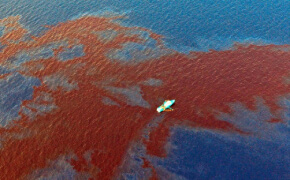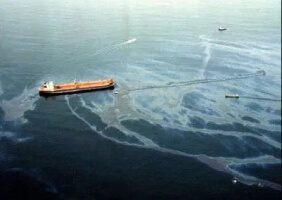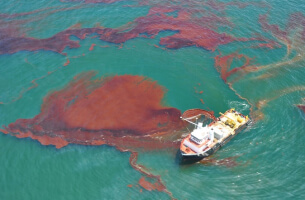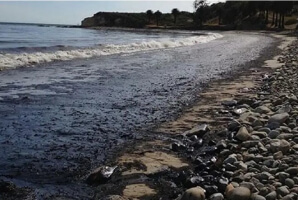The Environmental Toll of Oil Spills and U.S. Regulations to Prevent Them

Oil spills have always been one of the most visible and damaging forms of pollution of the environment. When around a crack in some ocean, a spill happens due to cracking or other activities of the ocean waters; this can have very adverse and long-lasting effects. Oil spills affect marine and coastal ecosystems adversely; besides that, spills get in the way of human life and the local economy, commercial fishing, and other activities. It therefore becomes paramount to understand how and why these spills happen so we can establish the impact as well as look into the regulatory oversight around them.
What Is an Oil Spill?
An oil spill occurs when petroleum-petroleum products are released into the environment, and this mostly occurs in water bodies. Sometimes a very slow leak may cause spills; sometimes it may be a little fast discharge. Oil does not dissolve in water, but rather spreads out in the form of a slick that quickly spreads on the water surface blocking the sunlight and the exchange of oxygen.
Types of Oil Spills
Oil spills can occur in many ways:
- Offshore Drilling Spills: These occur during exploration or extraction of oil beneath the ocean floor. Equipment failure, blowouts, or human error can lead to massive underwater leaks.
- Pipeline Spills: Crude oil or refined products are conveyed through vast networks of pipelines. Corrosion, cracks, or third party interference can lead to rupture, and with it, the discharge of oil into the neighboring lands or waterways.
- Tanker Spills: Large vessels transporting oil across oceans can leak or collide, often resulting in high-volume spills near coastlines.
- Storage Facility Spills: Above ground or underground tanks may leak through structural failure, wrong maintenance or as a result of natural disasters such as an earthquake or flood.
Each spill thus presents hazards-hazards dependent on location, volume, and oil type.
Some Major Oil Spills of the United States
Some of the most ravaging oil spills in United States history have shaken the foundations of both environmental policy and public consciousness. These being the widely feuilletons, smaller spills do occur quite frequently and still pose serious environmental threats.

Exxon Valdez (1989)
The tanker Exxon Valdez hit a reef in the waters off Alaska, spewing approximately 11 million gallons of crude oil into Prince William Sound. Being hard to reach and with rough terrain, cleanup was at best difficult and at worst somewhat impossible. The spill completely ruined the local wildlife and fisheries.

Deepwater Horizon (2010)
A disastrous explosion took place in the Gulf of Mexico offshore rig, killing 11 workers and spilling around 210 million gallons of oil over a period of 87 days. It still stands to be the greatest marine oil spill in American history and caused a major overhaul in the offshore drilling regulations.

Refugio State Beach (2015)
A pipeline rupture off the coast of California spewed over 140,000 gallons of oil, damaging marine life, beaches, and in turn, tourism. It clearly pointed to the continuing existence of risk days of increasingly aging infrastructure.
Causes of Oil Spills
Various causes may be at the cause of oil spills, often involving a mixture of technical and human errors:
- Equipment Failure: Broken valves, corroded pipes, and poorly maintained drilling platforms could all result in leaks.
- Operational Mistakes: Lack of communication, inadequate safety checks, and negligence are often the causes of accidents.
- Extreme Weather: Hurricanes, floods, or earthquakes can hurt the infrastructure and cause spills.
- Transportation Accidents: Collisions or groundings involving tankers or barges mostly result in huge discharges.
- Intentional Acts: Sabotage, theft, or illegal dumping make for a small yet serious number of spills.
Such incidents may surface anywhere along the oil supply chain-from extraction and transport to storage and distribution.
Environmental and Ecological Influence
Oil spills carry their far-reaching implications through many layers of an ecosystem.

Marine and Coastal Destruction
Oil is lethal to the undersea life. Fish, shellfish, birds, and mammals coming in contact with oil get poisoned-mainly with movement and reproduction being impaired. Birds contaminated with oil lose their insulation and buoyancy and may, therefore, die of hypothermia or even drown. Marine mammals like dolphins and sea otters inhale fumes or ingest oil while grooming with internal damage being caused.
Coral reefs, imperilled ecosystems, are fragile, to begin with, and thus are especially vulnerable to oil toxicity. Coastal wetlands and mangroves are critical biological buffers against storm surges and nurseries for fish, which take years if not decades to recover from oil contamination.

Short-Term vs. Long-Term Effects
Among the short-term effects are mass mortality of marine organisms, closure of fisheries, and polluted beaches. Remember that if the cleanup is not done rightly, its implementation can add to the damage.
The long-term effects remain undervalued in appearance and hence less considered: oil components settle in sediments, bioaccumulate along food chains, and impact reproduction, growth rates, and species survival for years after the spill. Community-level fishing or tourism could be economically struck even after the physical cleanup ends.
Prevention and Regulations
Preventing oil spills should involve strict regulations, upgraded technology, and emergency preparedness.

U.S. Regulatory Framework
Several federal agencies are charged with the prevention and response to oil spills:
- Environmental Protection Agency: This agency oversees inland spills and enforces the Clean Water Act.
- U.S. Coast Guard: It is the agency in charge of responding to marine spills and coordinating the emergency response.
- Bureau of Safety and Environmental Enforcement: It oversees offshore drilling operations and enforces safety standards.
After the Exxon Valdez spill, this landmark legislation enhanced federal response mechanisms, required companies to prepare response plans, and created a fund for spill cleanup activities.

Industry Practices and Technologies
Spill prevention practices are now more common within most companies: monitoring systems, double-hull tankers, emergency shutoffs, and so on. Pipeline integrity depends significantly on regular inspection and maintenance. Offshore platforms are now equipped with blowout preventers and fail-safe systems to minimize the risk of uncontrolled release.
Preventive measures include training, simulation drills, and coordination with local responders. Hindered by enforcement gaps, aging infrastructure, and political pressures, longer-term efforts seem often inconsistent.
Conclusion
Oil spills threaten marine ecosystems and coastal communities, as well as world's biodiversity. Large-scale oil spilling disasters, such as Deepwater Horizon, have seen new regulations and provisions implemented for their safety. Unfortunately, smaller spillages continue to happen at an alarming rate. Prevention comes with highly responsible oversight, constant innovation, and a well-informed populace. Beyond being an environmental concern, protecting waters is also an issue of public health and economic well-being in addition to long-term sustainability.